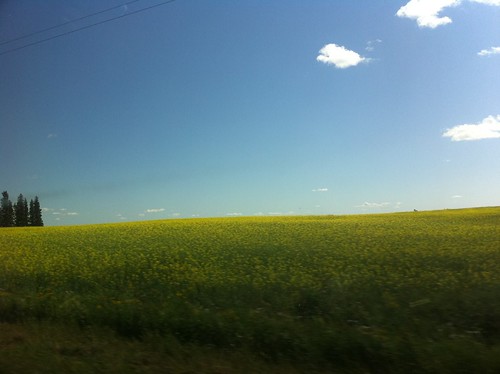Who is Wab Kinew, Canada’s first First Nations premier of Manitoba?
Manitoba #Manitoba

EXPLAINER
In a historical first, a member of Canada’s First Nations community has become the leader of Manitoba province.
Wab Kinew has been elected as the premier of the Canadian province of Manitoba, becoming the first First Nations leader to hold the post.
The 41-year-old’s elevation to the top provincial post comes after his left-of-centre New Democratic Party (NDP) secured a majority of 34 seats out of 57 in elections held earlier this week.
“Manitoba did something more progressive than any of those big cities ever did,” Kinew said during his victory speech on Wednesday. “We elected a strong team of New Democrats to fix healthcare and make your life more affordable.”
Why is Kinew’s win significant and what is his background?
Here’s what you need to know:
Who is Wab Kinew and what is the First Nations?
Kinew is the son of an Anishinaabe chief from the Onigaming First Nations land in Manitoba’s neighbouring province of Ontario. As a child, he moved to Winnipeg, Manitoba’s capital, with his family, where his father worked as a professor at the University of Winnipeg.
The First Nations is one of the three Indigenous or Aboriginal groups in Canada. As of the 2021 census, Canada’s Indigenous population was 1,807,250, or 5 percent of the national population.
The Indigenous population is broken down into Inuits (70,540), Metis (624,220) and First Nations (1,048,405). The latter were referred to as Indians up until the 1970s when the term First Nation became more common.
There are now more than 630 First Nations communities in Canada, which represent more than 50 Nations and 50 Indigenous languages.
 Wab Kinew becomes Manitoba’s first premier from the First Nations community [Handout via Reuters] Is Kinew the first Indigenous premier?
Wab Kinew becomes Manitoba’s first premier from the First Nations community [Handout via Reuters] Is Kinew the first Indigenous premier?
No, he’s not the first Indigenous premier, but he is the first First Nations politician to lead the state.
Manitoba’s first Indigenous premier was John Norquay from the Metis community. He took office in 1878.
Why is Kinew’s win significant?
Becoming the 25th leader of Manitoba is significant for Kinew and people from the First Nations, especially since Indigenous Canadians were not allowed to vote until 1960. Several Aboriginal rights weren’t fully recognised until 1982.
Manitoba has the highest proportion of Indigenous people in Canada. According to the 2021 census, there were 164,289 registered and 63 different First Nations in the province alone.
Before becoming the NDP leader in 2017, Kinew was a member of the hip-hop groups Slangblossom and the Dead Indians. He also worked as a journalist and university administrator.
In his victory speech, he said: “That is a testament to our province and country moving forward. Long way to go, but you cannot tell me that we haven’t made progress.
“I was given a second chance in life.”
What changes will Manitoba see under Kinew?
Kinew’s election campaign focussed on healthcare, and he’s promised to reopen three emergency rooms that were recently shut for Manitobans as well as a new cancer care centre. He’s also said the province would invest in more social housing.
Who is Kinew’s predecessor?
Heather Stefanson. She was the first female leader of Manitoba, Canada’s fifth most populous province. In her concession speech, she also announced her resignation as leader of the Progressive Conservative Party.
While serving as premier, Stefanson had promised to work closely with Indigenous communities, but instead was called to resign by the Assembly of Manitoba Chiefs, when she rejected an investigation into the deaths of two First Nations women.
At her election defeat, Stefanson congratulated Kinew’s win and said: “Wab, I hope that your win tonight inspires a future generation of Indigenous youth to get involved in our democratic process – not just here in Manitoba, but right across the country.”